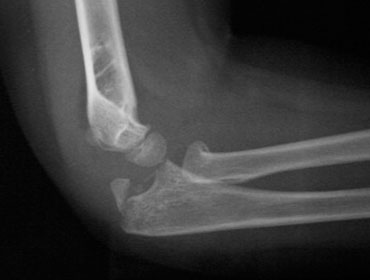Terrible Triad in Elbow
The word "triad" signifies "three." Three injuries are combined in a horrific triad: dislocation of the elbow, radial head fracture, and coronoid fracture. The elbow dislocates (the radius and ulna are forced away from the humerus) in some incidents, but no bones are broken; this is referred to as a "simple dislocation" by surgeons. The lateral collateral ligament and, in some cases (but not all), the medial collateral ligament are torn after an elbow dislocation. As the radius and ulna dislocate, they collide with the humerus, resulting in fractures.
The fractured radial head and coronoid can easily escape under the distal humerus due to the combination of the two fractures and ligament tearing. The collagen bundles that used to hold the bones together are torn, and the fractured radial head and coronoid can easily escape under the distal humerus. Elbow instability can continue without surgery, and even when surgery is performed incorrectly. Persistent instability will not only cause pain and incapacity to use the arm, but it will also cause rapid articular cartilage deterioration, causing the elbow to become arthritic!
Treatment
Manipulation to reposition the displaced joint should be done as quickly as feasible, typically before getting the 3D-CT. The treatment is known as "closed reduction," and it is usually done under sedation or anaesthesia. To get the elbow bones in the proper position, the ER doctor or surgeon will reposition the forearm relative to the arm. The elbow will desire to come out of place again in horrible triads due to the fractures of the radius and coronoid, though full redislocation can be avoided in many instances by immobilizing the arm bent beyond 90 degrees.
Manipulation to reposition the displaced joint should be done as quickly as feasible, typically before getting the 3D-CT. The treatment is known as "closed reduction," and it is usually done under sedation or anaesthesia. To get the elbow bones in the proper position, the ER doctor or surgeon will reposition the forearm relative to the arm. The elbow will desire to come out of place again in horrible triads due to the fractures of the radius and coronoid, though full redislocation can be avoided in many instances by immobilizing the arm bent beyond 90 degrees.
The surgery's goals are to
(1) re-establish the radial head's support,
(2) perform a dedicated, secure ligament repair, and
(3) heal the coronoid fracture (if the fractured coronoid piece is small, it may not require fixation).

